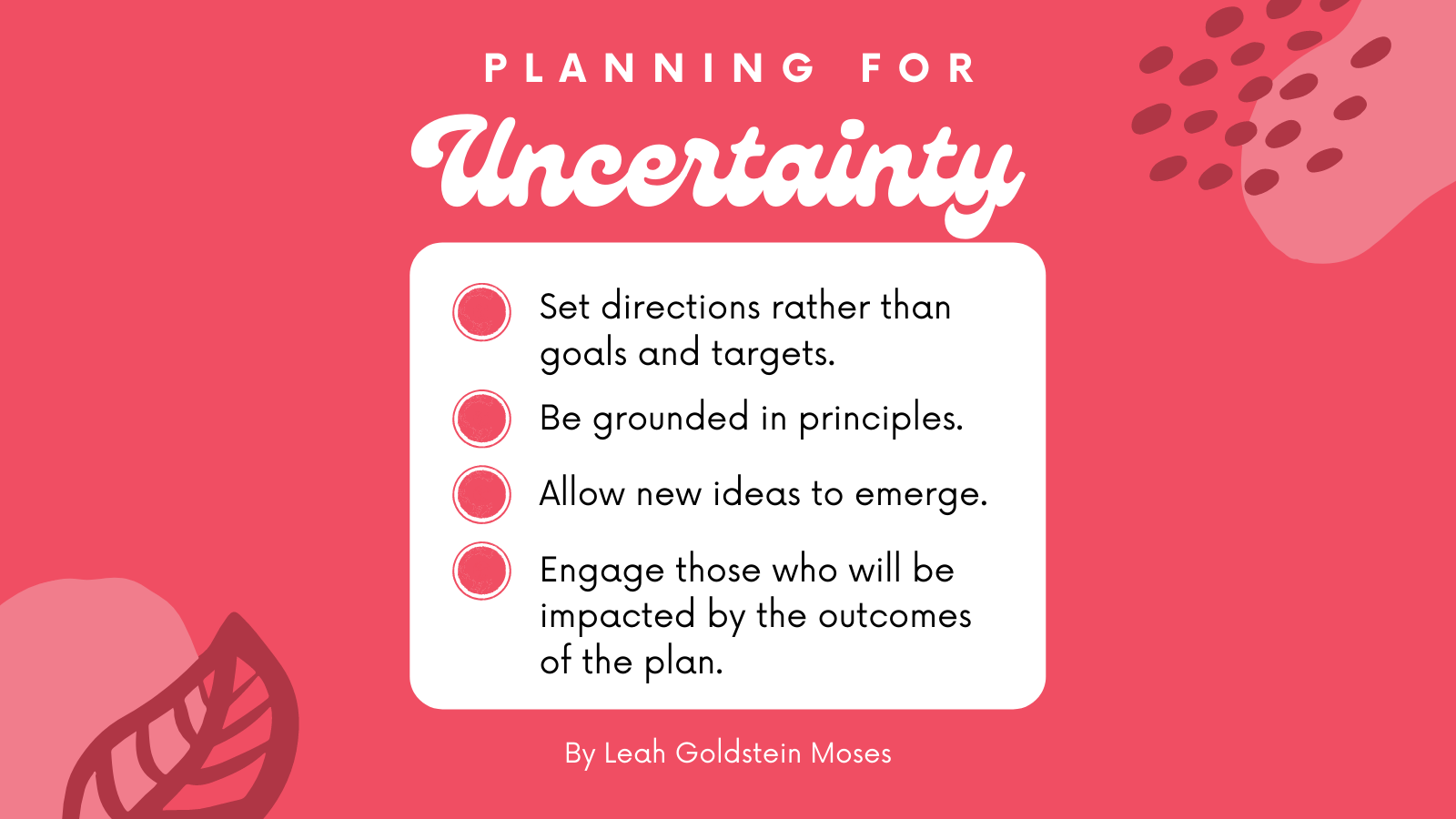
How do you plan for uncertainty?
Instead of planning goals, action steps, and targets, you set directions and determine principles (see more on how we did this with a client in this article) that will guide your decisions.
That is exactly what The Improve Group did when, several months into the pandemic, we began to think about our physical office space.
By then, we knew that we couldn’t predict the future. Feeling like we had to prepare for every possibility and had no control over the future was exhausting. Equally exhausting was laying out detailed plans that might need to be abandoned. We needed some middle ground that would provide some clarity and guidance without being too restrictive.
Enter principles. From staff polls, conversations, and office hours, four key principles emerged; these would prove incredibly valuable for decision-making in the months that followed:
- Being flexible and providing opportunities for staff to self-manage,
- Working in, with, and as a community,
- Advancing our strategic plan goals, and
- Maintaining space to grow and evolve while lightening financial burdens, risks, and commitments.
These principles had the wonderful effect of taking some options off the table. They also helped us to answer these very important questions:
- What possibilities do we want to be open to us in the future?
- What are some steps we can take right now to keep those possibilities open?
We continue to adapt our working environment based on public health conditions and what we each need to do our work. For example, some employees come into the physical office regularly; some come in as needed; and some work exclusively from home.
Many leaders are being called on to adopt new ways of being as uncertainty dominates the context in which we are working (see more on how CEOs are handling uncertainty this New York Times article). What we found helpful was to allow new ideas to emerge and be grounded in principles and directions rather than goals.
